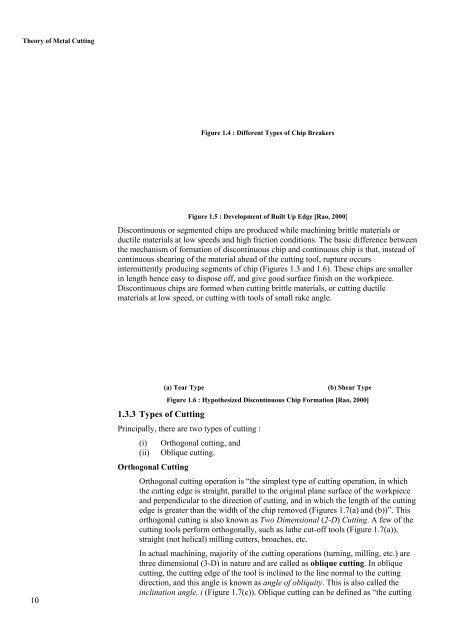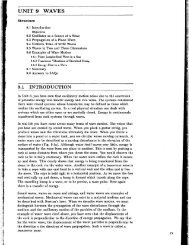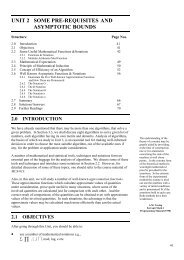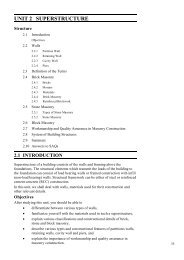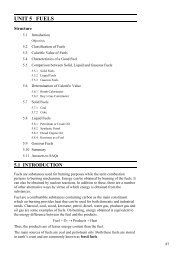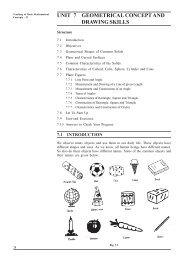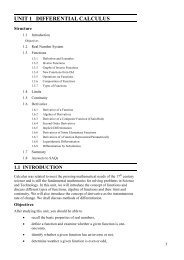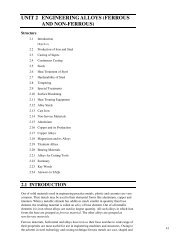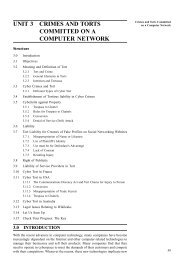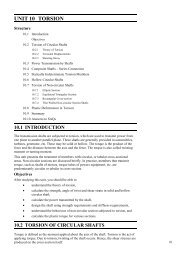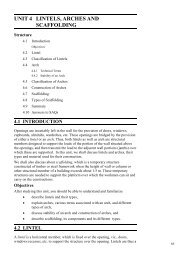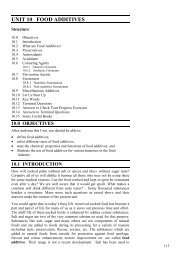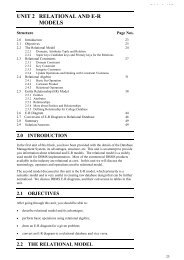unit 1 metal cutting and chip formation - IGNOU
unit 1 metal cutting and chip formation - IGNOU
unit 1 metal cutting and chip formation - IGNOU
You also want an ePaper? Increase the reach of your titles
YUMPU automatically turns print PDFs into web optimized ePapers that Google loves.
Theory of Metal Cutting<br />
10<br />
Figure 1.4 : Different Types of Chip Breakers<br />
Figure 1.5 : Development of Built Up Edge [Rao, 2000]<br />
Discontinuous or segmented <strong>chip</strong>s are produced while machining brittle materials or<br />
ductile materials at low speeds <strong>and</strong> high friction conditions. The basic difference between<br />
the mechanism of <strong>formation</strong> of discontinuous <strong>chip</strong> <strong>and</strong> continuous <strong>chip</strong> is that, instead of<br />
continuous shearing of the material ahead of the <strong>cutting</strong> tool, rupture occurs<br />
intermittently producing segments of <strong>chip</strong> (Figures 1.3 <strong>and</strong> 1.6). These <strong>chip</strong>s are smaller<br />
in length hence easy to dispose off, <strong>and</strong> give good surface finish on the workpiece.<br />
Discontinuous <strong>chip</strong>s are formed when <strong>cutting</strong> brittle materials, or <strong>cutting</strong> ductile<br />
materials at low speed, or <strong>cutting</strong> with tools of small rake angle.<br />
1.3.3 Types of Cutting<br />
(a) Tear Type (b) Shear Type<br />
Figure 1.6 : Hypothesized Discontinuous Chip Formation [Rao, 2000]<br />
Principally, there are two types of <strong>cutting</strong> :<br />
(i) Orthogonal <strong>cutting</strong>, <strong>and</strong><br />
(ii) Oblique <strong>cutting</strong>.<br />
Orthogonal Cutting<br />
Orthogonal <strong>cutting</strong> operation is “the simplest type of <strong>cutting</strong> operation, in which<br />
the <strong>cutting</strong> edge is straight, parallel to the original plane surface of the workpiece<br />
<strong>and</strong> perpendicular to the direction of <strong>cutting</strong>, <strong>and</strong> in which the length of the <strong>cutting</strong><br />
edge is greater than the width of the <strong>chip</strong> removed (Figures 1.7(a) <strong>and</strong> (b))”. This<br />
orthogonal <strong>cutting</strong> is also known as Two Dimensional (2-D) Cutting. A few of the<br />
<strong>cutting</strong> tools perform orthogonally, such as lathe cut-off tools (Figure 1.7(a)),<br />
straight (not helical) milling cutters, broaches, etc.<br />
In actual machining, majority of the <strong>cutting</strong> operations (turning, milling, etc.) are<br />
three dimensional (3-D) in nature <strong>and</strong> are called as oblique <strong>cutting</strong>. In oblique<br />
<strong>cutting</strong>, the <strong>cutting</strong> edge of the tool is inclined to the line normal to the <strong>cutting</strong><br />
direction, <strong>and</strong> this angle is known as angle of obliquity. This is also called the<br />
inclination angle, i (Figure 1.7(c)). Oblique <strong>cutting</strong> can be defined as “the <strong>cutting</strong>


